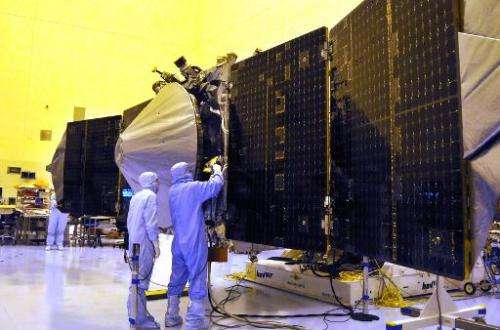Shutdown makes US 'less desirable' for science

The US government shutdown puts international science collaboration in peril and could have far-reaching impacts on innovation and research, a top science group said Wednesday.
"If the government shutdown continues for a week or more, it is going to make the United States less desirable as an international research collaborator," said Joanne Carney, director of the American Association for the Advancement of Science Office of Government Relations.
"When funding is no longer reliable, many of our research partners may be unable to continue collaborating with us," she said in a statement.
"That could eventually have longer-term impacts on American innovation and competitiveness."
The majority of staff at US science agencies are affected by the shutdown, with half of the Department of Health and Human Services and three quarters of the National Institutes of Health on unpaid leave.
The US space agency has gone almost completely dark, except for support for the International Space Station and its astronauts as well as for other satellite missions now underway.
"No new contracts or grants will be issued by NASA, however, and most pre-launch development work will end," said a statement issued by AAAS, which is the publisher of the journal Science.
The National Science Foundation will be alerting those who are expecting research grants that payments will not be made while the government is out of service.
However, "research that doesn't require federal employee intervention may proceed," said Matthew Hourihan, director of the AAAS R&D Budget and Policy Program.
Hundreds of cancer patients, including children, were expected to be denied entry into last-ditch clinical trials for treatment, a spokesman for the National Institutes of Health told AFP.
The largest research hospital in the world, the NIH Clinical Center is continuing to operate at 90 percent of normal patient load.
That means about 200 patients will be turned away from treatment at the Clinical Center each week the shutdown persists, including about 30 children, a spokesman told AFP.
About 10 of those children have cancer, he added.
The Food and Drug Administration has also warned it would "be unable to support the majority of its food safety, nutrition, and cosmetics activities."
Routine inspections, import monitoring and lab research would have to cease until further notice, it said.
Most of the 13,814 employees of the US Department of Energy will be furloughed, leaving only a few hundred staff at the National Nuclear Security Administration.
"Most federal science programs and employees lost support as of midnight 1 October," said the AAAS statement.
A key exception has been the rollout of the healthcare reform law, which opened its online exchanges Tuesday so consumers could browse insurance options, though glitches were common.
The shutdown—the first in 17 years—came after Democrats refused to give in to Republican lawmakers' demands for a rollback of President Barack Obama's healthcare reform law, which Congress passed in 2010 and was subsequently upheld by the Supreme Court.
Journal information: Science
© 2013 AFP



















